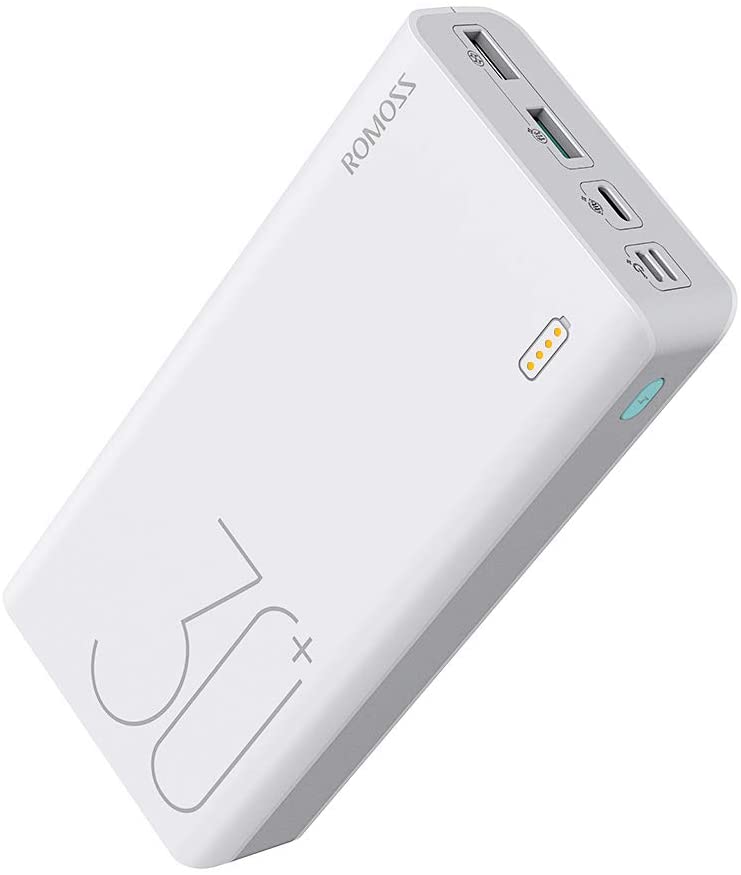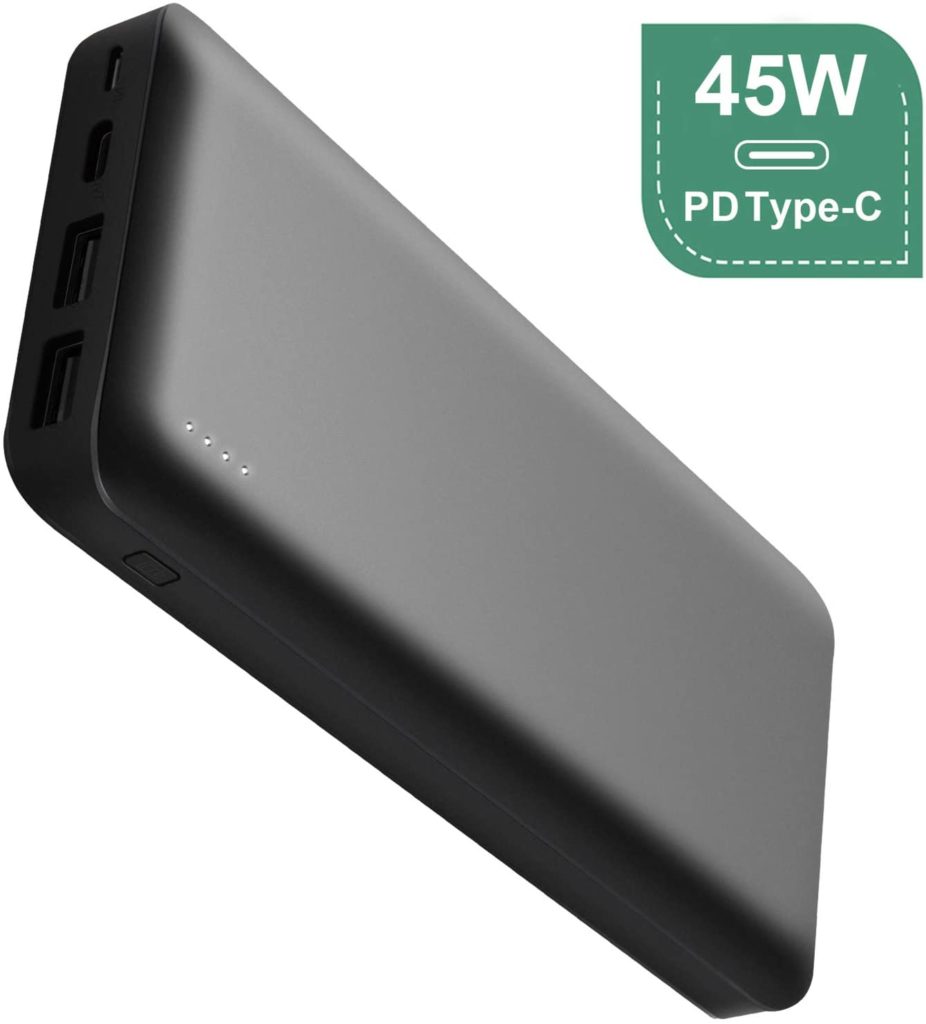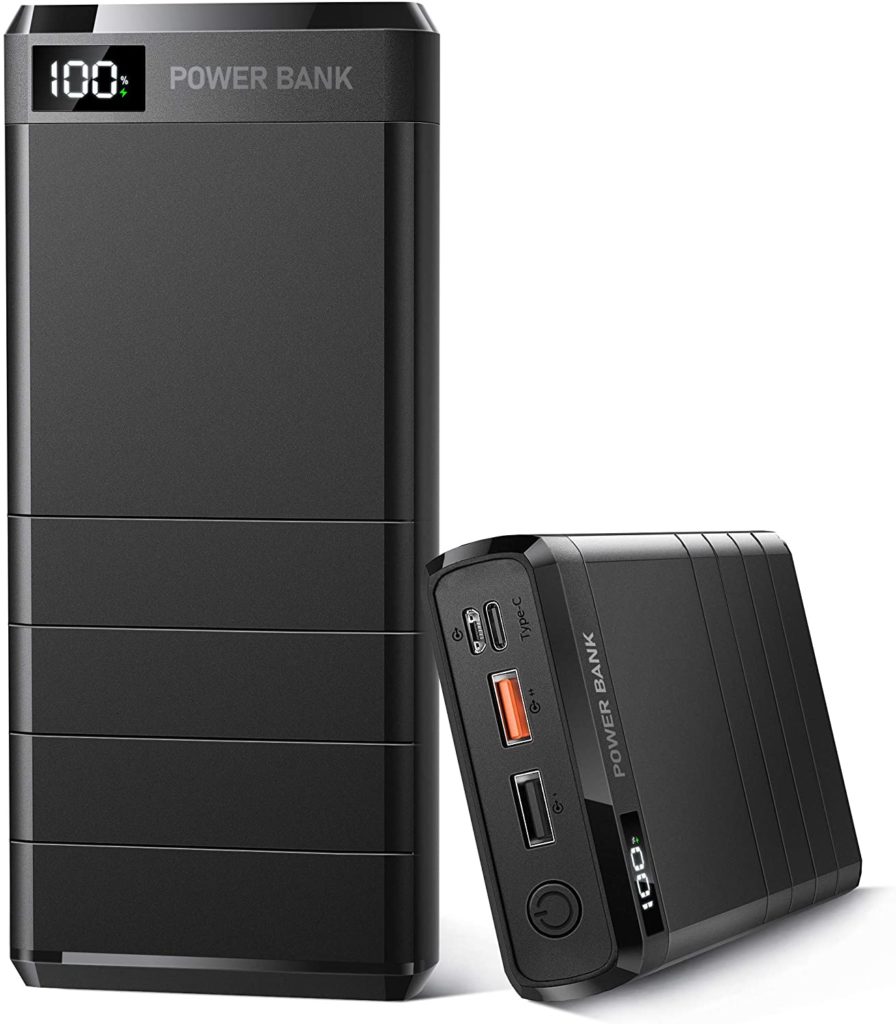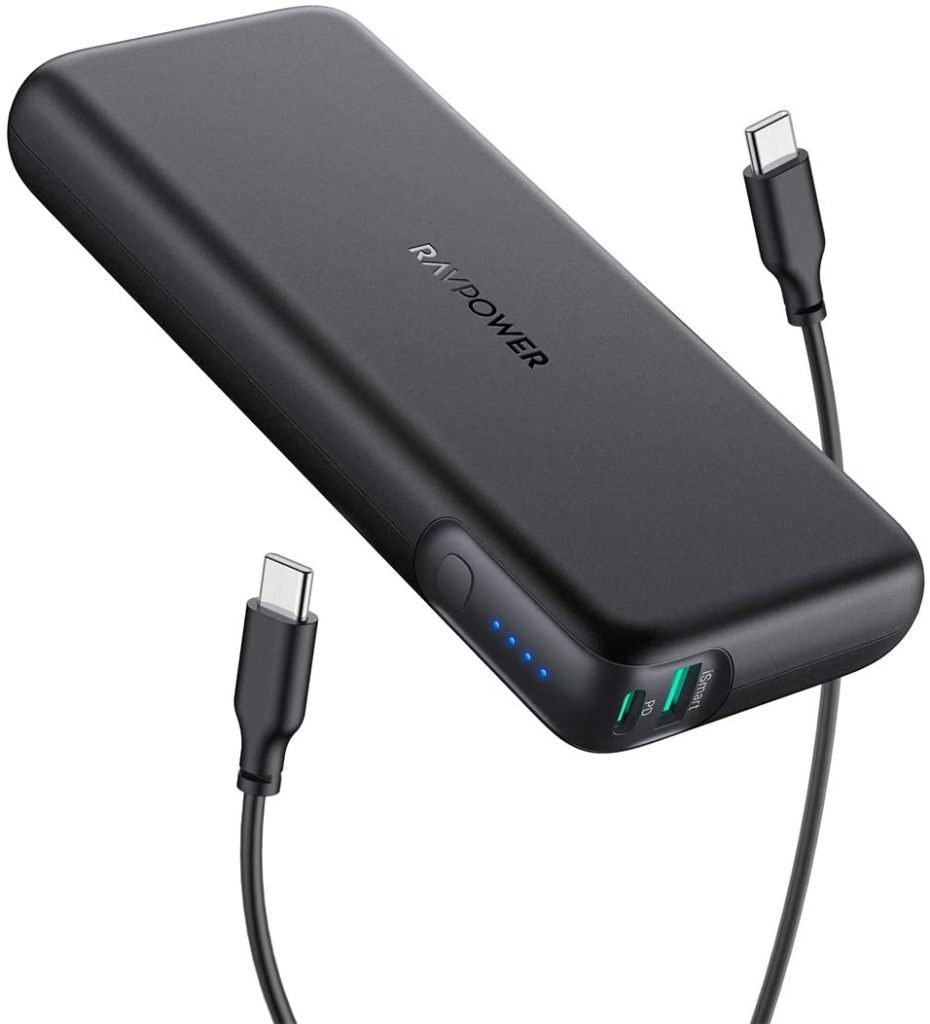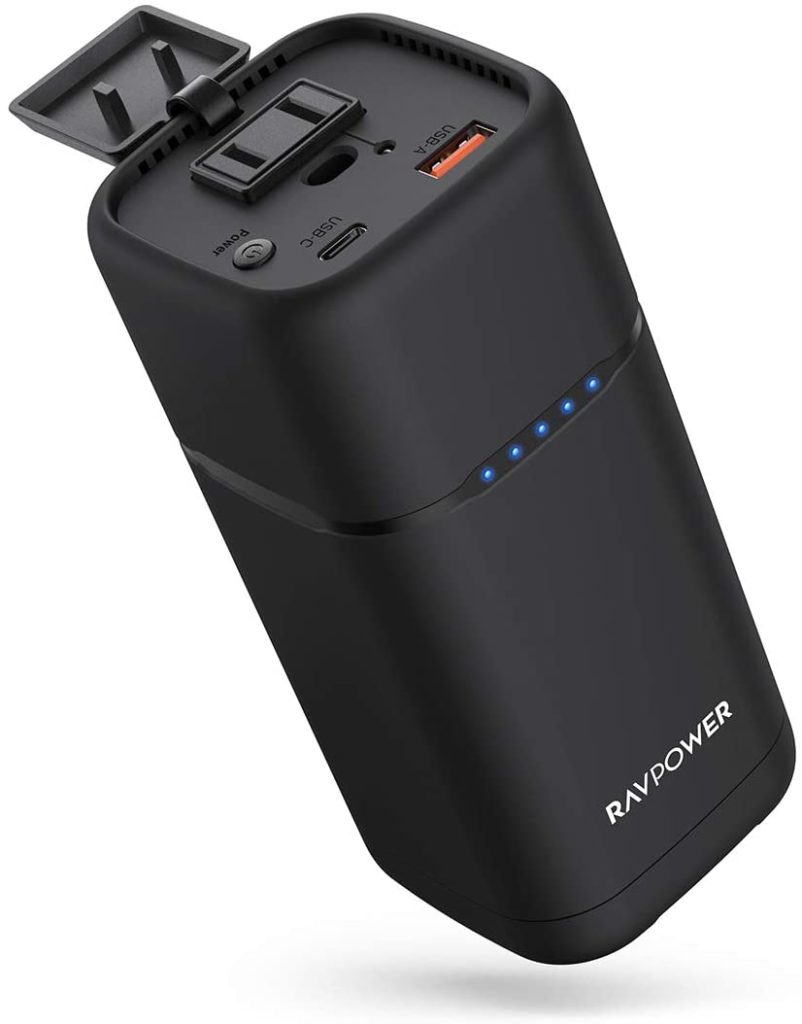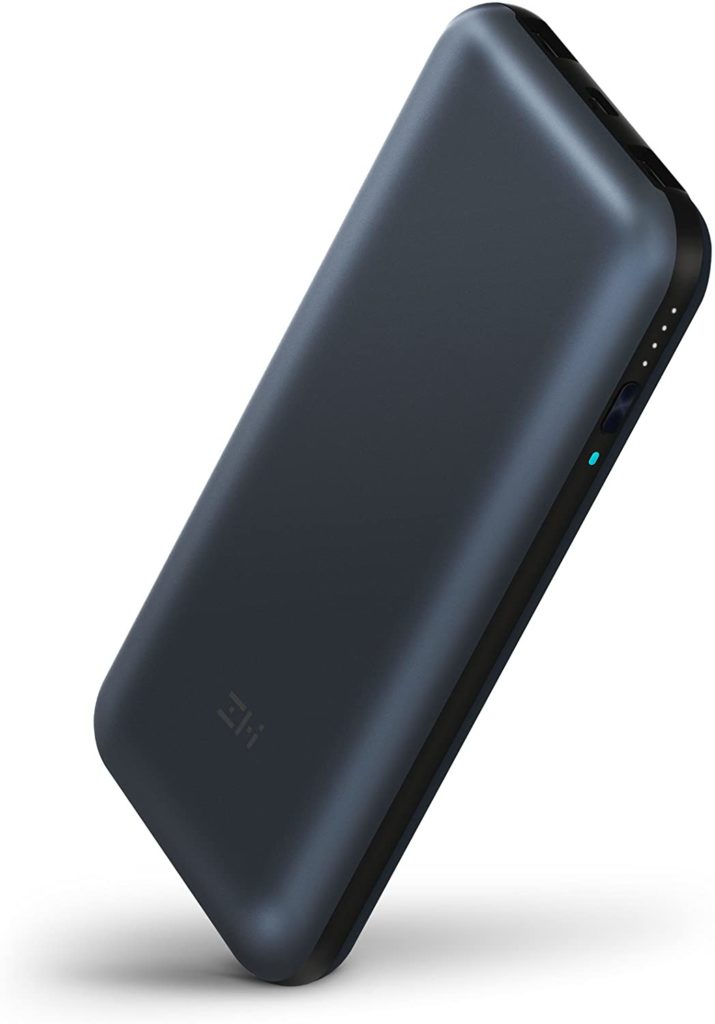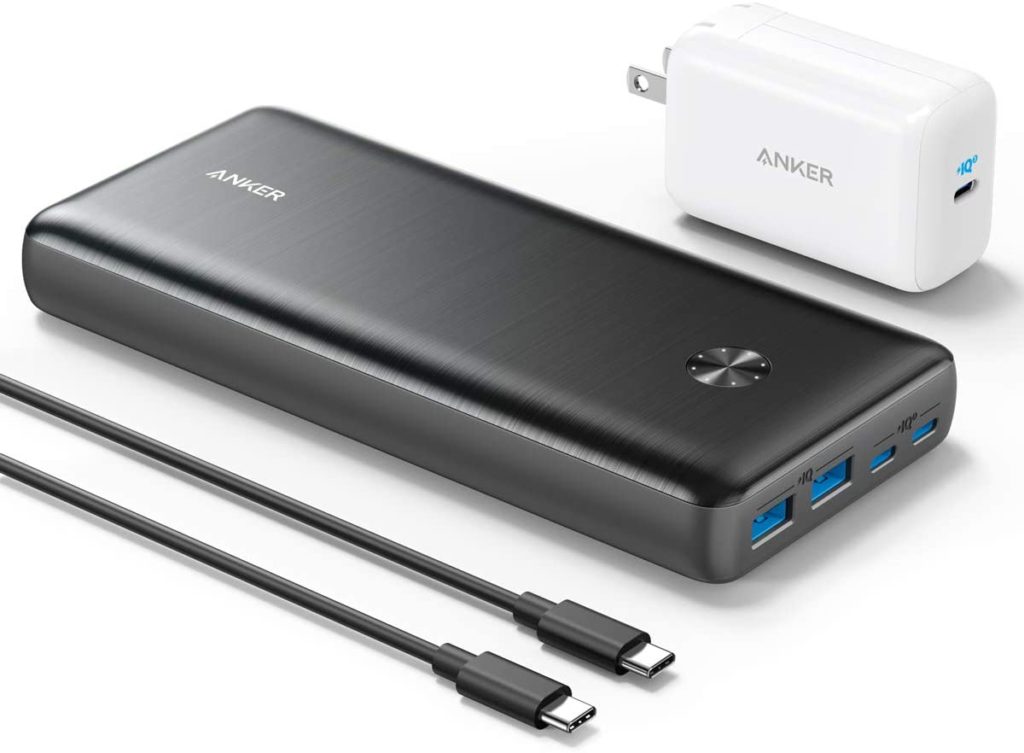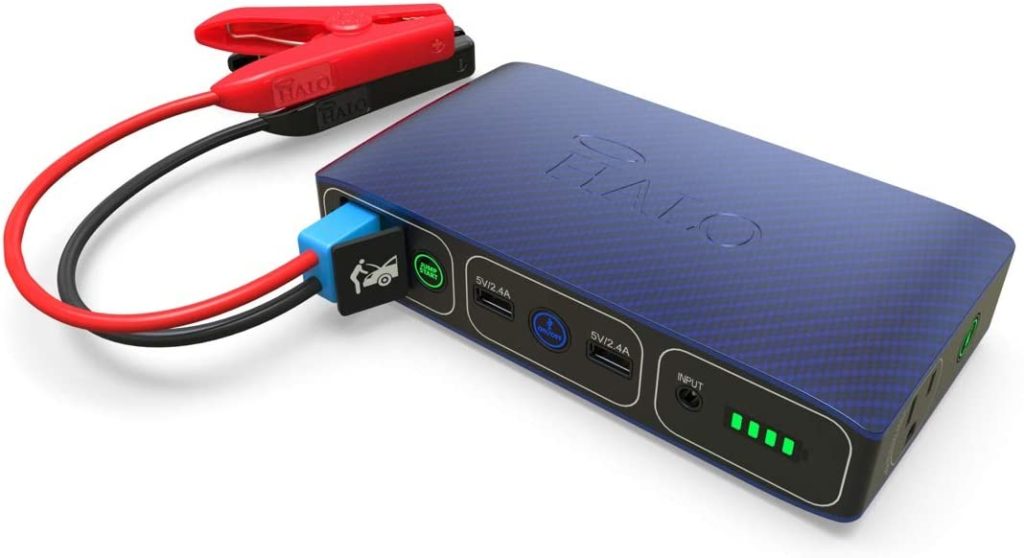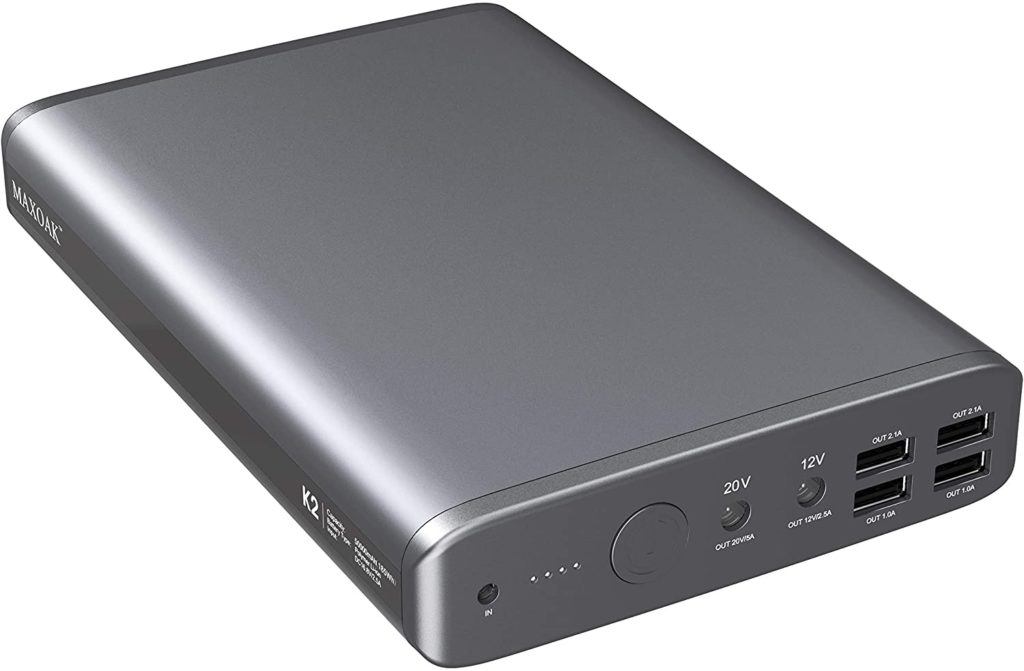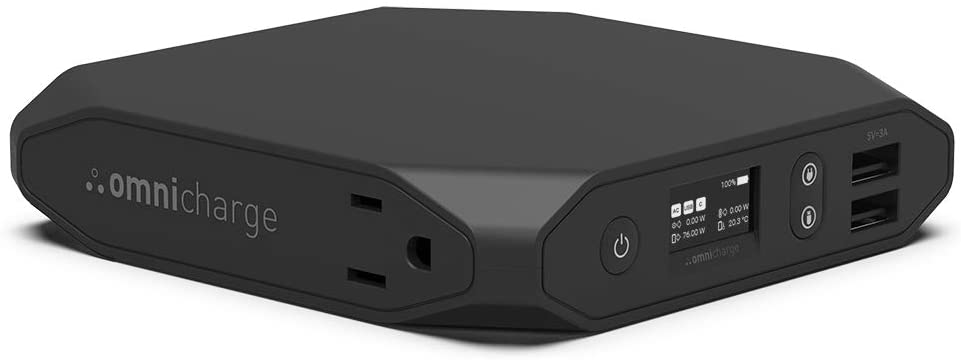We’ve crunched the web for the best options of charging your laptop with a power bank. But first, you must understand your laptop, specifically the wattage—which is a measure of how much power your laptop consumes. Most laptops out there will take in about 30W (e.g. the MacBook Air), 45W (e.g. Dell XPS 13), or 65W (e.g. HP Elite X2 MacBook Pro). Laptops can be powered either via AC power (your wall socket, for example) or via Direct Current. Powerbanks mostly charge your devices directly through DC. For laptops, this requires a USB-C port on your laptop with charging capabilities. Sadly, this is still only supported in newer high-end laptops such as MacBook Air/Pro, HP Spectre X360, Surface Pro, Dell XPS 13, etc. If your laptop has USB-C, then look out for power banks that support USB-C Power Delivery 3.0. For regular laptops that use an AC adapter, you’ll need a power bank that has an AC outlet. These are unfortunately few and a lot more expensive than those with USB-C ports. Here are some laptops with USB-C PD support;
MacBook Pro 13/15”/MacBook Air/MacBook 12 DELL XPS 13 /15 Surface Pro 7 HP Spectre X360 / Spectre X2 / Spectre Folio / ELITE BOOK 830 G5 Lenovo X1 / YOGA730 / E490 / ideapad 720s-13 / THINKPAD X390 Huawei MateBook X Pro/MateBook X/MateBook13 Samsung Notebook9(950XBE)Xiaomi Air
Another thing to consider is the power input or wattage of your laptop measured in watts vs the power output of the power bank. If your laptop takes in 30W and you use an 18W powerbank, it’ll either charge slowly or refuse to charge altogether. Therefore, aim for a powerbank whose power outage is either close to or more than your laptop’s rated maximum power input. Lastly, if you plan on catching a plane, lookout for a power bank below the accepted battery rating considered for aviation. 100Wh is the standard TSA-approved figure; anything above won’t be checked in. The formulae for converting from mAh to Wh is E(Wh) = Q (mAh) × V(V) / 1000. For instance, a power bank rated 30,000mAh at 3.7 volts = 111Wh. This won’t get into the plane.
1. ROMOSS 30,000mAh Power Bank
This powerbank has three inputs (micro-USB, lightning, USB-C) and two outputs (two USB-A and USB-C). It’s able to charge up to three devices at once and can be used to charge USB-C compatible laptops through the bi-directional USB-C port. At 18W USB-C PD, it’s not the fastest way to charge your laptop.
2. Panergy 26,800mAh PD 45W powerbank
Looking for a bit better performance? This Panergy 26,800mAh PD 45W power bank is a good option. It comes with one Micro-USB port for charging it and three output ports; two USB-A rated 5V/3.4A and an additional bi-directional USB-C port. The USB-C port supports up to 45W output power which can charge a Macbook for about 2 hours.
3. Fkant 30,000mAh 83W Powerbank
Going for a bit more power? This 30,000mAh power bank from Fkant has a total power output of 83W across all the ports. If you’re charging a laptop, then you’re going to use the USB-C PD port which supports a maximum power output of 65W.
4. RAVPower 20,000mAh 60W Powerbank
If you’re going for something for familiar, then this 20,000mAh powerbank with 60W power output is a good option. RAVPower is a well established powerhouse in electronic accessories, so you can’t go wrong. It has 45W power output on the USB-C port which can charge your Macbook pro 13″ from 0-60% in about an hour according to RAVPower. The other port is a regular USB-A QC 3.0 port with 18W output which you can use to charge your smartphone. You can recharge this powerbank in about 3 hours if you use 30W USB-C PD wall charge or about 10 hours with a regular 10W phone charger. One verified buy was able to charge their Dell XPS 13 laptop for 6 hours and another user reported success with Surface Go. This powerbank is $48.99 on amazon.com. You can get the bigger 30,000mAh 90W at $79.99.
5. RAVPower 20,000mAh 80W Powerbank with AC outlet
What if I told you that you don’t need to own an expensive USB-C laptop to charge it using a power bank? You can use this RAVPower 20,000mAh power bank to charge any regular laptop. In fact, any small power AC appliance rated below 80W. This power bank includes an AC outlet; you can use your standard AC power cord (U.S pin) to charge your laptop up to 100W maximum power output.
6. ZMI 20,000mAh 45W Powerbank
7. Anker PowerCore+ 26800mAh 45W powerbank
Looking all-in-one solution? Get this Anker PowerCore+ 26,800mAh powerbank. It has total power output of upto 45W via USB-C PD enough to charge most laptops and an additional 15W USB-A port for smartphones. Anker has included a 60W USB-C wall charger (Anker PowerPort Atom III) that can be used to recharge the power bank in just 3 and half hours.
8. HALO Bolt 58830 mWh with AC outlet
What if you want a power bank that can charge just about any laptop and also jump-start a standard-size SUV car in case you’re stuck in the middle of nowhere? The answer is this Halo Bolt 58,830mAh power bank. This power bank is small and lightweight and deserves to be added to your emergency toolkit.
9. Maxoak 50,000mAh/185Wh powerbank
This is a massive 130W, 50,000mAh power brick you can use to charge Dell, HP, Lenovo, Samsung, Acer, and most popular PC laptops. Since different laptops come with different sets of charging connectors, this power bank has 14 pieces of DC connectors. No AC outlet or USB-C output ports are included.
10. Omni 20+ 20000mAh Laptop Power Bank with AC outlet
The Omni 20+ 20,000mAh is another multipurpose universal power bank you can use to charge or power a lot of mobile devices such as cameras, drones, smartphones, tablets, or laptops. It comes with a standard 100W AC outlet 120V(AC) suitable for powering your laptop. Honorable mentions include;
45W PD 30000mAh imuto USB C Portable Charger – $59.99Eggtronic 20,000mAh 63W Laptop Power Bank – $69.99RoyPow 86.58Wh 30W PD powerbank – $69.99SinKeu 24000mAh/88.8Wh powerbank with AC outlet – $99.99AC Outlet Power Bank 85W NOVOO 81Wh/22500mAh Laptop Portable Charger – $99.99Krisdonia 50000mAh Laptop Power Bank – $125.99Omars 40,200mAh AC laptop Powerbank – $115.99Dell Power Companion 4 Cell 12000 mAh (NHHRC)
